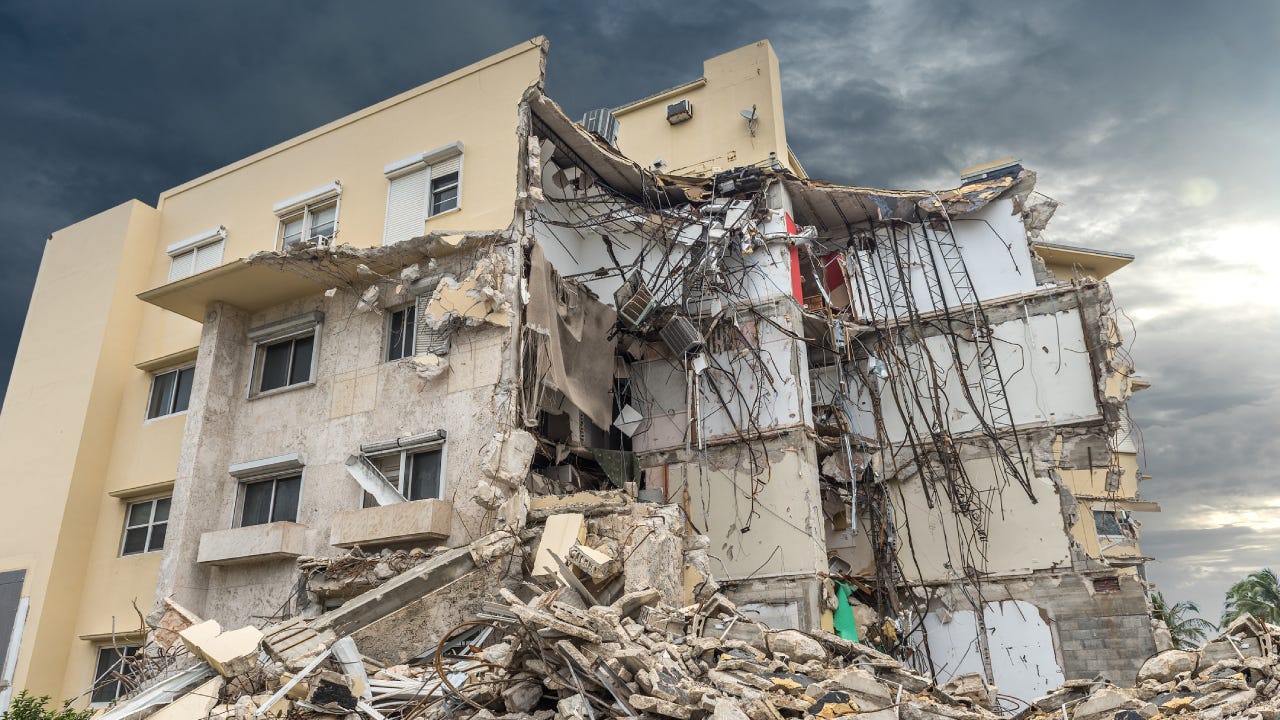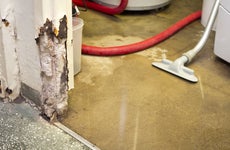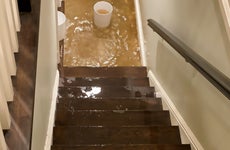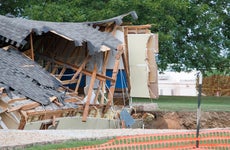Mine subsidence insurance

The Bankrate promise
At Bankrate, we strive to help you make smarter financial decisions. To help readers understand how insurance affects their finances, we have licensed insurance professionals on staff who have spent a combined 47 years in the auto, home and life insurance industries. While we adhere to strict , this post may contain references to products from our partners. Here's an explanation of . Our content is backed by Coverage.com, LLC, a licensed entity (NPN: 19966249). For more information, please see our .
Mine subsidence is a risk in areas where old mining sites exist. It is a type of surface-level ground movement that happens when there is an underground collapse or shift. Though home damage from mine subsidence is uncommon, some areas of the country are at higher risk and typical home insurance policies don’t cover against these damages. If you live in an area that experiences mine subsidence you may want to buy additional insurance to cover your home.
What is mine subsidence?
Mine subsidence occurs when there is shifting, sinking or collapsing of the ground as a result of mines underground. When there is movement, it can cause sinkholes, depressions or troughs in the land, which in turn can cause great damage to any structures built on or near it. Mine subsidence damage, by definition, is damage caused by a shifting or collapse of the earth from the human-built structure, and not because of a natural occurrence like you might find with an earthquake.
There are pockets in the United States, such as in Pennsylvania and Illinois, where there is a greater concentration of abandoned mines near residential areas. While the Environmental Protection Agency (EPA) has identified 33 different states where abandoned land mines exist, only a handful of states have areas of concern where housing is built on or near possible mine subsidence. In general, abandoned land mines refers to an area where mining used to take place but is no longer active.
Do I need mine subsidence insurance?
If you live in an area identified by the EPA as an abandoned land mine site, you might consider adding this coverage. If you are working with a licensed insurance agent, chances are a knowledgeable agent would be familiar with the location of the home and could possibly know if it is prone to mine subsidence.
If you’re not sure if you need mine subsidence insurance, consider speaking with a licensed insurance agent or do some research before adding coverage. You’ll likely want to first confirm if your home is built near an abandoned land mine. States where this is a concern have resources available with information on this. For example, Pennsylvania offers an online site where you simply input your address to confirm possible mine subsidence concerns. Counties in some states, such as certain designated counties in Illinois, require that mine subsidence coverage be automatically included in home insurance policies, although this can be declined in writing by the policyholder. Whether the coverage is mandated or not, if you are concerned about your home’s proximity to abandoned land mines, it may be worth inquiring about adding the coverage.
How much mine subsidence coverage do I need?
Mine subsidence coverage may vary depending on what state you reside in and the insurance company writing your policy. In general, the coverage includes a deductible, but offers coverage up to a specific limit as stated in the policy. In most states, there are both minimums and maximums to how much coverage you can purchase. For example, in Indiana you can purchase up to $500,000 in coverage.
Where can I get mine subsidence insurance?
Depending on where you live, mine subsidence insurance may be available through private insurers or state programs. If you’re having trouble finding affordable coverage, it may help to work with a licensed insurance agent in your area who is familiar with mine subsidence insurance.
Some states, such as Illinois and West Virginia, require all homeowners insurance providers in the state to offer mine subsidence insurance coverage in affected counties. In Illinois, there are 34 counties where the insurance coverage must be automatically included in homeowners policies. If you are not a resident of one of these counties, you can inquire about adding it to your homeowners policy through your own carrier.
How much does mine subsidence insurance cost?
The cost of mine subsidence coverage varies depending on the insurance limits you choose and where you live. Some homeowners insurance policies may include the coverage already, so you may want to first confirm that your current homeowners policy does not automatically include mine subsidence insurance. Comparing quotes from private insurers with any potential coverage options from state programs may help you figure out what the cheapest option is for your coverage needs.
Using Pennsylvania as an example, there are policies available through the Pennsylvania Department of Environmental Protection for purchase. The residential coverage cost is listed as 27 cents per $1,000 purchased in coverage. A policy with $150,000 of coverage towards damage as a result of mine subsidence is estimated to cost around $41.25 per year. There is typically a limit in the amount of coverage you can purchase, and in Pennsylvania the coverage can not exceed $1,000,000.
Frequently asked questions
-
-
Mining was a common practice across much of the United States, but some areas saw far more mining activity than others. The EPA lists 33 states with abandoned mines, but many are not located in residential areas. States with a larger number of residential structures near abandoned mines include Colorado, Illinois, Indiana, Kentucky, Missouri, Ohio, Pennsylvania and West Virginia.
-
Mine subsidence insurance is a fairly niche form of insurance and it isn’t widely applicable. If you live in one of the states the EPA lists as having greater risk of mine subsidence near residential areas, look into whether your home is near a historical mine. If you’re near an old abandoned mining site, consider buying coverage. Otherwise, you may not need to buy a policy. If you’re unsure, consider talking to a local licensed insurance agent for guidance.
-
When purchasing a home, the seller or property owners may be required by law to disclose whether the property is affected by mine subsidence. If a disclosure is not available, you may be able to use EPA maps or state search options to identify potential subsidence. Some states even have online tools where you can put in your exact location and find out if your property is affected. Or, if you live in an area prone to mine subsidence, you may want to look for signs of the problem. In many cases, the first signs of damage could be cracks in the foundation and sagging walls. Other common signs are sinkholes, cracks in the ground, uneven floors, doors and windows, and shifting walls. Damage to the electrical system, including short circuits, could be another sign.
-
Related Articles



